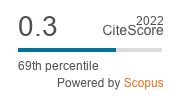Drogi rosyjskiej scholastyki
[The Ways of Russian Scholasticism]
The document is a translation of
 Vladislav Arzhanukhin
Vladislav Arzhanukhin
Puti Russkoy Skholastiki
Abstract
This article outlines the history and development of Russian scholastic thought, whose evolution took place over the course of a century, from the mid-17th to the mid-18th centuries. By the time scholasticism began to spread in Russia, it had already reached its final stages of development in Europe. Of the three major European schools of scholasticism—nominalism, Thomism and “second scholasticism”—the last two were the most popular ones in Russia.
Keywords
Cite this article
Arzhanukhin, Vladislav. “Drogi rosyjskiej scholastyki.” Forum Philosophicum 11 (2006): 193–210. doi:10.35765/forphil.2006.1101.12.
Bibliography
Cranz, F. Edward. “Editions of the Latin Aristotle accompanied by the Commentaries of Averroes.” In Philosophy and Humanism: Renaissance Essays in Honor of Paul Oskar Kristeller, edited by Edward P. Mahoney, 116–128. New York: Columbia University Press, 1976. Mahoney, Edward P., ed. Philosophy and Humanism: Renaissance Essays in Honor of Paul Oskar Kristeller. New York: Columbia University Press, 1976. Randall, John Herman. “The Development of Scientific Method in the School of Padua.” Journal of the History of Ideas 1, no. 2 (1940): 177–206. doi:10.2307/2707332.



